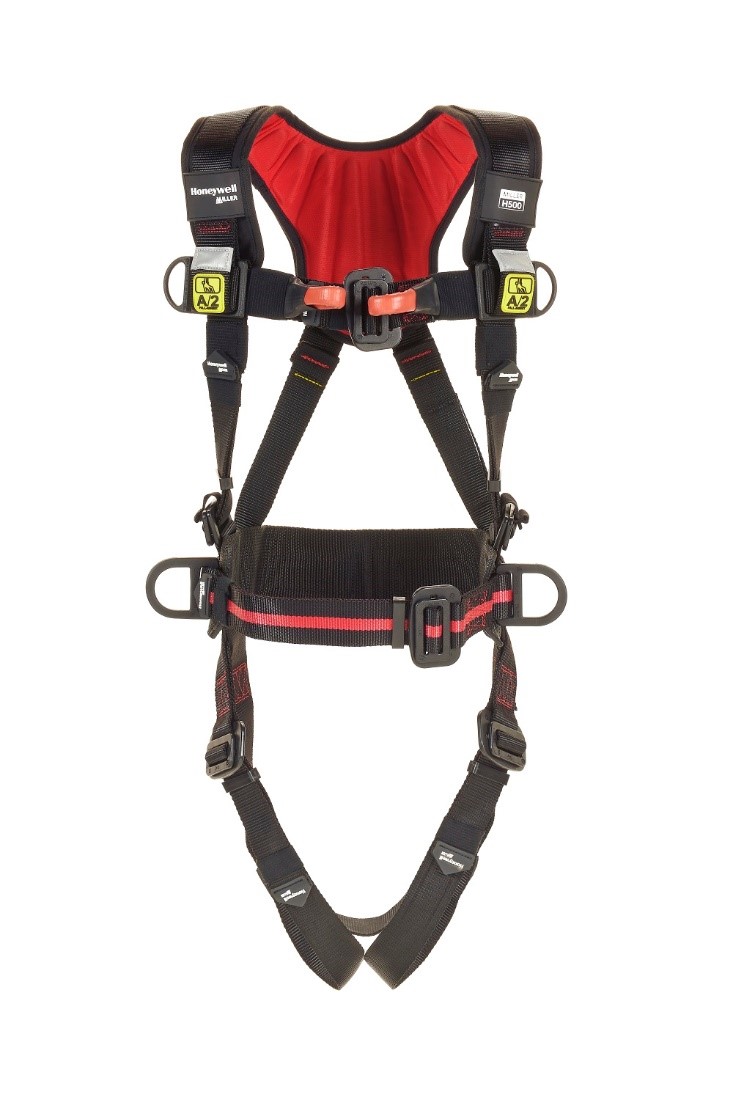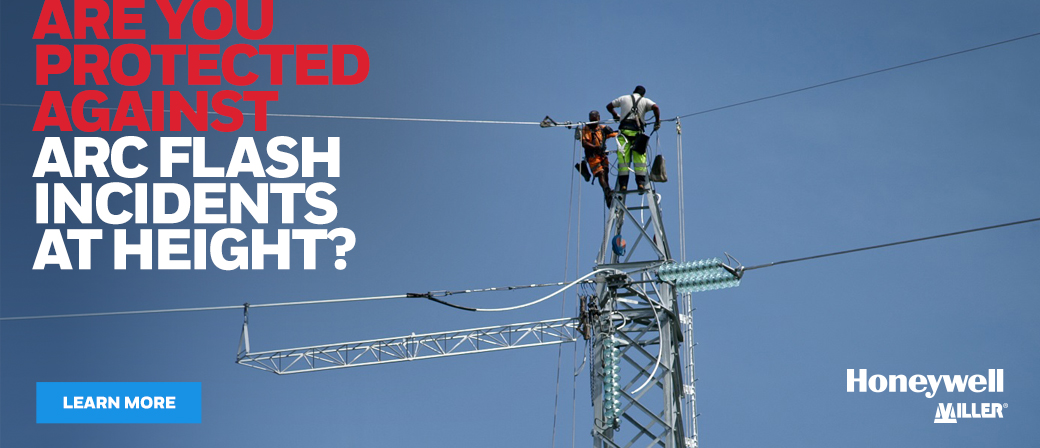THE ESSENTIALS OF ELECTRICAL WORK AT HEIGHT: INTRODUCING THE MILLER H500 ARC FLASH SERIES
The Essentials of Electrical Work at Height: Introducing the Miller H500 Arc Flash Series. .
You may be compliant when it comes to clothing, gloves and other accessories, but have you considered the harness and lanyards that are protecting you at height?
For most of us, electricity is a natural part of our everyday lives. It’s just something we take for granted to power our devices and we don’t give a second thought to how it is produced and how it reaches our homes.
But for some who work directly with it, it is a matter of life and death. The risks of working with electric current represent a serious workplace health and safety issue. According to the National Fire Protection Association (NFPA), data from the U.S. Bureau of Labour Statistics (BLS) show that there were nearly 6,000 fatal electrical injuries to workers in the U.S. between 1992 and 2013, with a steep decline in the latter years. However, the trend with non-fatal electrical injuries is less consistent, as it varies between approximately 2000 and 2900 from year to year.
Arc flashes: More violent and more common than imagined .
The same source identifies arc flash injuries as some of the most frequent hazards when working with electric current. An arc flash is described by OSHA as an electrical explosion or discharge that results when the electric current leaves its intended path and travels through the air from one conductor to another, or to the ground.
In an instant, temperatures at the source of an arc flash can reach 20,000 °C and the explosive force can cause the propulsion of debris, molten metal and other particles at speeds of up to 300 meters per second. The violence of such an incident can lead to severe damage, including potential blindness or deafness and other hidden deadly injuries such as internal bleeding or even the death of workers who are in its proximity.
The Industrial Safety and Hygiene News reports that the arc flash is not at all a rare thing: annually, 30.000 arc flash incidents happen in the US alone. Failure to use appropriate Personal Protective Equipment (PPE) for electrical work is a contributing factor in many of these electrical injuries.
Specialists consider PPE to be the last line of protection after an arc flash incident, as the first option should always be to use assessments and technology reduce the frequency and severity of incidents.
Arc flash harnesses, the essential PPE when doing electric work at height .
Employees working in areas where electrical hazards are present have to use Arc-Rated (AR) protective equipment, designed and constructed for the specific part of the body to be protected and for the work to be performed.
Consider somebody working with electric current at height. It could be a group of electricians working in height to set up a new cable from a village to city between two electric power grid towers. Or a group of electricians and telecom workers setting up a new GSM/Wi-Fi/TV Broadcast tower. Working with electricity at height is a common occurrence in industries such as construction, utilities, manufacturing, civil engineering or rail.
As you can imagine, the risks are multiplied for workers at height. An arc flash incident could happen in any of the instances below, to name but a few:
1. Electric network/power grid construction and maintenance indoor/outdoor (telecom or power network towers)
2. Electric railway cables/public lights maintenance
3. Providing electric power into the mining system and machines.
4. Steel frame welding for buildings and big high constructions
The PPE the worker must wear when performing electrical work at height should contain equipment specially designed for fall protection, that is also fire resistant, such as harness and lanyard. This fall protection equipment must pass rigorous tests to be deemed protective in case of arc flash, and it also must be comfortable enough for the workers to wear it.

Honeywell introduces the Miller H500 Arc Flash series .
When working at height, the safety lanyard connects the harness to a secure anchor point. This way, the worker is prevented from falling to the ground. Honeywell introduces the Miller H500 Arc Flash series, especially designed for electrical work at height.
Both the Honeywell Miller H500 Arc Flash Harness and the Honeywell Miller® H500 Arc Flash Lanyard are designed and third-party tested to ensure workers are protected from falls even after an arc flash of 40 cal/cm².
Both are made of materials capable to self-extinguish quickly and prevent melting or dripping. This ensures, on one hand, that the equipment continues to function as intended and prevents a fall, and that the worker won’t suffer burns from the flammable equipment.
The design and technology embedded in the Miller H500 Arc Flash Harness have the needs of the worker at their core:
1. Ergonomic safety
The dielectric back D ring, dielectric side D rings and dielectric mating buckles, lanyard keepers, and flame-retardant elastic keepers ensure that the harness is flame retardant and its materials won’t melt or drip.2. Lightweight
Designed with light but resistant polyamide webbing and polyamide front webbing loops and removable shoulder padding, the size M weighs only 2,6 kg.3. Style
The harness features visible load indicators, a protected label pouch and thick waist belt, for increased comfort.4. Evidence-based performance
The harness passed the following ASTM F887 performance testes: .• The tensile strength of the webbing material is 7,000 lb (31kN), which is higher than typical safety harnesses. .
• The Electrical Arc Performance test requires the product to self-extinguish, not melt nor drip and maintain integrity after being subjected to an arc flash.
• The drop test uses a 100 kg (220lb) test torso and the harness must be able to meet the drop.
The Miller H500 Arc Flash Harness is designed to work perfectly with the Honeywell Miller® H500 Arc Flash Lanyard, providing electrical workers at height the protection and comfort they need to do their best work.


The lanyard is made up of the same flame-retardant materials and is subjected to the same ASTM F887 tests as the harness. It also features an energy absorber, a hook with 65 mm opening and a length of 1.8m.
Keep your electrical workers protected while working at heights.
Watch Honeywell's Arc Flash videos here .


